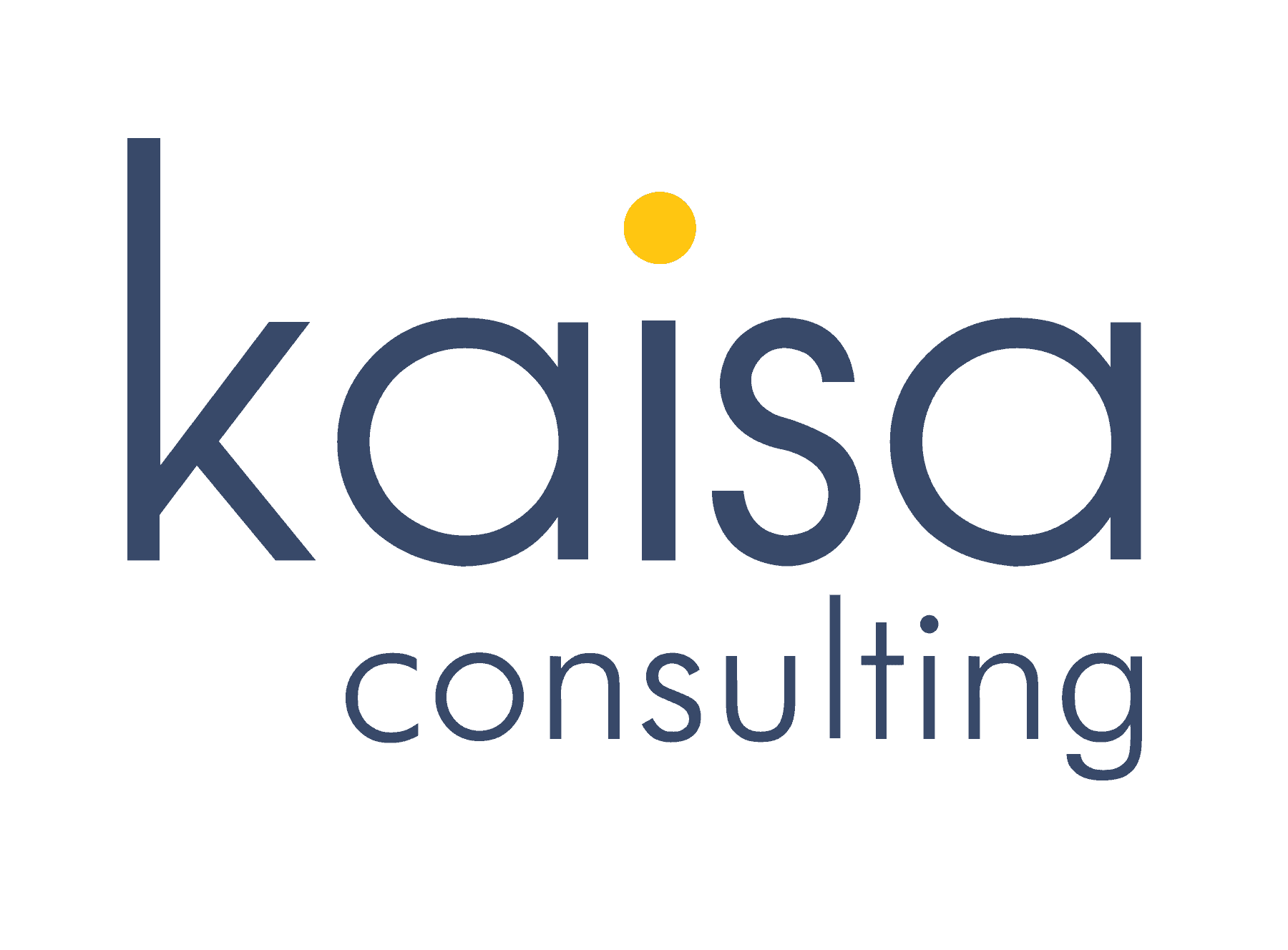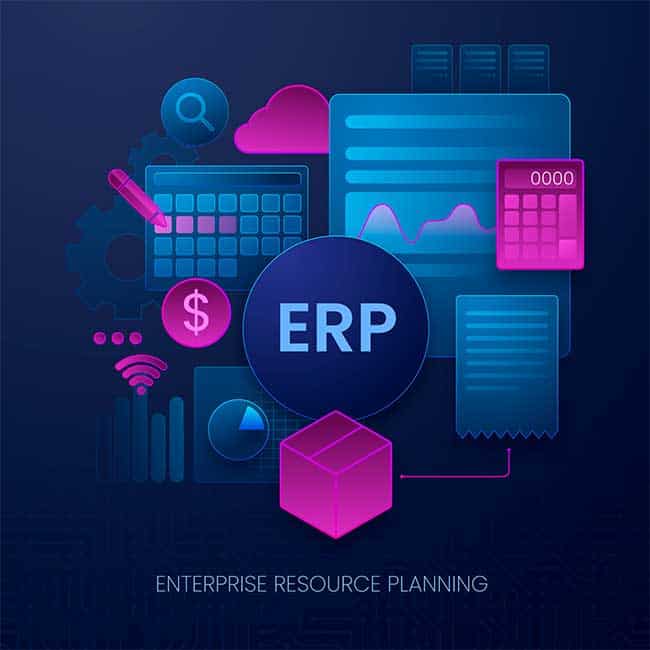In an era where 96% of top-performing businesses leverage ERP systems, understanding and unlocking its power is critical. This guide aims to demystify this complex tool that integrates and streamlines business operations into a unified system. From startups to established enterprises, ERP systems revolutionize business processes, enhance efficiency, and drive informed decision-making.
What is ERP?
Enterprise Resource Planning (ERP) is a type of business management software. It allows an organization to use a system of integrated applications to manage the business and automate many back-office functions related to technology, services, and human resources.
Enterprise resource planning (ERP) software streamlines and unifies all aspects of a business operation. Every facet seamlessly integrates into a single database, application, and user interface — from product planning and development to manufacturing, sales, and marketing. This means that different departments within a business can work more efficiently together, as they have access to the same data and can communicate through the system.
What types of businesses benefit the most from an ERP system?
- Manufacturing
Manufacturing businesses benefit from ERP systems by streamlining production, raw material procurement, and inventory management. The system enables real-time production monitoring, efficient work order execution, and better forecasting for improved efficiency and cost reduction.
- Distribution
Distribution companies efficiently manage and track goods movement with an ERP system. It provides integrated functionality for order tracking, inventory management, customer service, and financial controls. Accurate data enables informed decisions, enhancing the speed and accuracy of the distribution process.
- Retail
With ERP systems, retail businesses manage inventory, orders, and customer relationships effectively. Modules for point-of-sale, e-commerce, marketing, and promotions improve sales strategies and customer engagement. Real-time sales data helps forecast demand and plan inventory accordingly.
- Energy and Utilities
ERP systems help energy and utilities companies manage assets, maintenance, and regulatory compliance. They optimize operations, manage risks, and respond effectively to changes in the energy market.
- Professional Services
Professional service firms, like consulting, legal, and accounting, benefit from ERP systems in project management, resource planning, and billing. It allows tracking of time and resources spent on each project and facilitates improved financial management and reporting for accurate performance monitoring.
Choosing the Right ERP System for Your Business
Choosing the right Enterprise Resource Planning (ERP) system can be a game-changer for your business. It can streamline operations, improve efficiency, and provide insightful data for strategic decisions. Here are some key considerations to keep in mind:
- On-Premise vs. Cloud ERP
The first decision is whether to opt for an on-premise or cloud-based ERP system. On-premise ERPs are installed locally on your company’s hardware and servers, offering more control and security. However, they require significant upfront investment and ongoing maintenance.
On the other hand, cloud ERPs are hosted on the vendor’s servers and accessed via the Internet. They offer scalability, flexibility, and cost-effectiveness with minimal upfront costs. However, businesses might have concerns about data security and reliance on internet connectivity.
- Customization and Integration
Every business has unique needs and processes. Therefore, the ability to customize your ERP system and integrate it with existing systems is crucial. A good ERP system should be flexible enough to accommodate your business’s specific requirements and seamlessly integrate with other applications you use daily.
- Considerations for Small vs. Mid-Large Businesses
The size of your business significantly affects the selection of an ERP system. Small businesses might prefer simple, cost-effective solutions with essential features and easy implementation. In contrast, mid to large-sized businesses may require complex ERP systems that can handle diverse operations, multiple locations, and a larger number of users.
Implementing an ERP System Successfully
Implementing an ERP system is a complex process that requires careful planning and execution. Here are some key steps to ensure a successful ERP implementation:
- Project Planning
Project planning is the first and most important step in ERP implementation. It involves defining objectives, setting a realistic timeline, and allocating resources. A detailed project plan should include tasks, milestones, and responsibilities. Involving key stakeholders from different business functions is essential to ensure the ERP system meets departmental needs.
- Data Migration
Data migration is the process of transferring existing data to the new ERP system. This step requires careful planning to ensure data integrity and accuracy. It involves cleaning up old data, deciding what data to migrate, and mapping data fields. A well-executed data migration process minimizes disruptions and ensures the new system has the necessary data.
- Training and Change Management
Implementing a new ERP system often means significant changes in business processes. Therefore, training and change management are crucial for a smooth transition. Employees need to understand how to use the new system and why it’s beneficial. Regular communication, comprehensive training programs, and ongoing support can help ease the transition and ensure user adoption.
- Testing and Quality Assurance
Before going live, the ERP system must undergo rigorous testing to detect any potential issues or gaps. This includes functional testing, integration testing, and user acceptance testing. Quality assurance measures should be in place to monitor the system’s performance and rectify any issues post-implementation.
Business Benefits of ERP Systems
Implementing an ERP system can offer many benefits to businesses of all sizes and sectors. Here’s how:
- Enhanced Business Reporting
One major benefit of an ERP system is improved business reporting. ERP systems consolidate business operations data from various departments into one place, enabling more accurate and consistent reports, faster reporting times, and better decision-making.
- Data Security
ERP systems offer robust security measures to protect valuable business data. They include built-in controls to prevent data breaches and unauthorized access. Centralized data facilitates enforcing access controls, monitoring activity, and identifying security threats more easily.
- Increased Productivity
ERP systems significantly boost productivity by automating routine tasks, eliminating redundancies, reducing manual data entry, and allowing employees to focus on strategic tasks. This leads to cost savings and efficiency improvements over time.
- Streamlined Processes
ERP systems integrate diverse business functions, such as finance, HR, procurement, and inventory management, into a single, streamlined system. This promotes better communication, eliminates data silos, and ensures everyone works with the same information. The result is smoother, more efficient business processes.
- Real-time Insights
ERP systems provide real-time visibility into business operations, granting leaders immediate access to critical data. This enables faster, more informed decision-making, swift responses to market changes, and the ability to identify trends, opportunities, and issues early on.
Overcoming the Challenges of ERP Implementation
Implementing an Enterprise Resource Planning (ERP) system can be a significant undertaking with many challenges. Here’s how businesses can overcome some of these common hurdles:
- Costs
One of the main challenges of ERP implementation is managing associated costs, including software, hardware, training, and maintenance. To overcome this, businesses should conduct thorough research and budgeting beforehand. Considering long-term ROI is also crucial, as a well-implemented ERP system can lead to significant cost savings.
- Training
Another challenge is training employees to use the new system. This can be time-consuming and costly, but it’s crucial for user adoption and maximizing benefits. To address this, businesses should provide comprehensive training programs and ongoing support. Involving end-users early in the process ensures the system meets their needs.
- Resistance to Change
Resistance to change is common in ERP implementation. The new system may overwhelm or threaten employees, resulting in resistance and slow adoption. To overcome this, businesses should communicate the benefits of the ERP system clearly and regularly. Involving employees in the process and providing support helps them adapt.
- Integration Issues
Integrating the ERP system with existing systems is another challenge. This can lead to data silos, inefficiencies, and potential failures. To address this, businesses should carefully plan and test the integration process. Working closely with the ERP vendor or a skilled IT team is essential.
Measuring ROI for ERP Systems
Measuring the Return on Investment (ROI) for Enterprise Resource Planning (ERP) systems can be a complex task, but it’s crucial for understanding the value that these systems bring to an organization. Here’s how businesses can quantify benefits and track cost savings:
- Quantifying Benefits
The first step in calculating ROI for an ERP system is quantifying the benefits it provides. These can include increased productivity, improved efficiency, reduced labor costs, and better decision-making. To quantify these benefits, businesses need to establish key performance indicators (KPIs) and measure them before and after the ERP implementation. The difference represents the value added by the ERP system.
- Tracking Cost Savings
Another important aspect of measuring ROI is tracking cost savings. These can come from various areas like reduced inventory costs, lower IT costs, and savings from automated processes. To calculate the ROI, businesses can use the formula: (total value of investment – total cost of ownership) / total cost of ownership) x 100. This gives a percentage that represents the return on investment. The higher the percentage, the better the investment ranks.
When Does a Company Need an ERP System?
There are several signs that a company may need to implement an Enterprise Resource Planning (ERP) system. Here’s a breakdown of these indicators:
- Existing Process Inefficiency
If a company’s current processes are inefficient – marked by delays, errors, or inconsistencies – it may be time to consider an ERP system. ERP systems can automate routine tasks, streamline workflows, and improve data accuracy, making business operations more efficient.
- Struggling to Meet Customer Demands
If a company is struggling to meet customer demands due to a lack of real-time data or inefficient operations, an ERP system can help. ERP systems provide real-time visibility into business operations, helping companies respond quickly to customer needs and market changes.
- Expanding Operations
As a company grows and expands, managing operations can become increasingly complex. An ERP system can help manage this complexity by integrating various business functions—like finance, HR, procurement, and inventory management—into a single system. This can make it easier to manage growing operations and ensure all parts of the business are working together effectively.
- Regulatory Compliance
Companies in regulated industries may need an ERP system to help manage compliance. ERP systems can track and document compliance activities, generate required reports, and ensure that business processes are in line with regulatory requirements.
ERP System Maintenance and Upgrades
Enterprise Resource Planning (ERP) systems are crucial for the smooth running of businesses. However, like any other system, they require regular maintenance and upgrades to ensure optimal performance and stay relevant to changing business needs and technological advancements.
ERP System Maintenance
- Data Management: Regularly update and cleanse the system’s data to maintain its accuracy and reliability.
- User Support: Provide prompt assistance to users facing difficulties or experiencing technical issues with the system.
- System Performance Monitoring: Continually track the performance of the ERP system to identify and rectify potential issues before they escalate.
- Security Updates: Regularly update the system’s security measures to protect against cyber threats and safeguard the system and its data.
ERP System Upgrades
- Business Needs Assessment: Prior to upgrading, understand the additional functionalities or improvements your organization needs. This helps in selecting the most suitable upgrade.
- Training: Ensure all users are adequately trained on the new version of the ERP system, enabling them to utilize the system effectively.
- Testing: Before fully implementing the upgrade, testing it in a controlled environment is important to detect and fix any potential issues early.
Isn’t it time you gave your manufacturing business the edge it needs to survive and thrive in today’s competitive market? Kaisa Consulting’s ERP system for manufacturing in the Philippines can help streamline your processes, boost productivity, and provide real-time insights to drive better decision-making.
It’s cost-effective, easy to use, and customizable to fit your specific business needs. As your ERP partner in the Philippines, say goodbye to manual processes and data silos and hello to streamlined operations, real-time insights, and increased productivity with Kaisa Consulting’s ERP solution. Don’t hesitate to call at +(63) 945 572 9634 for a consultation and demo today.

